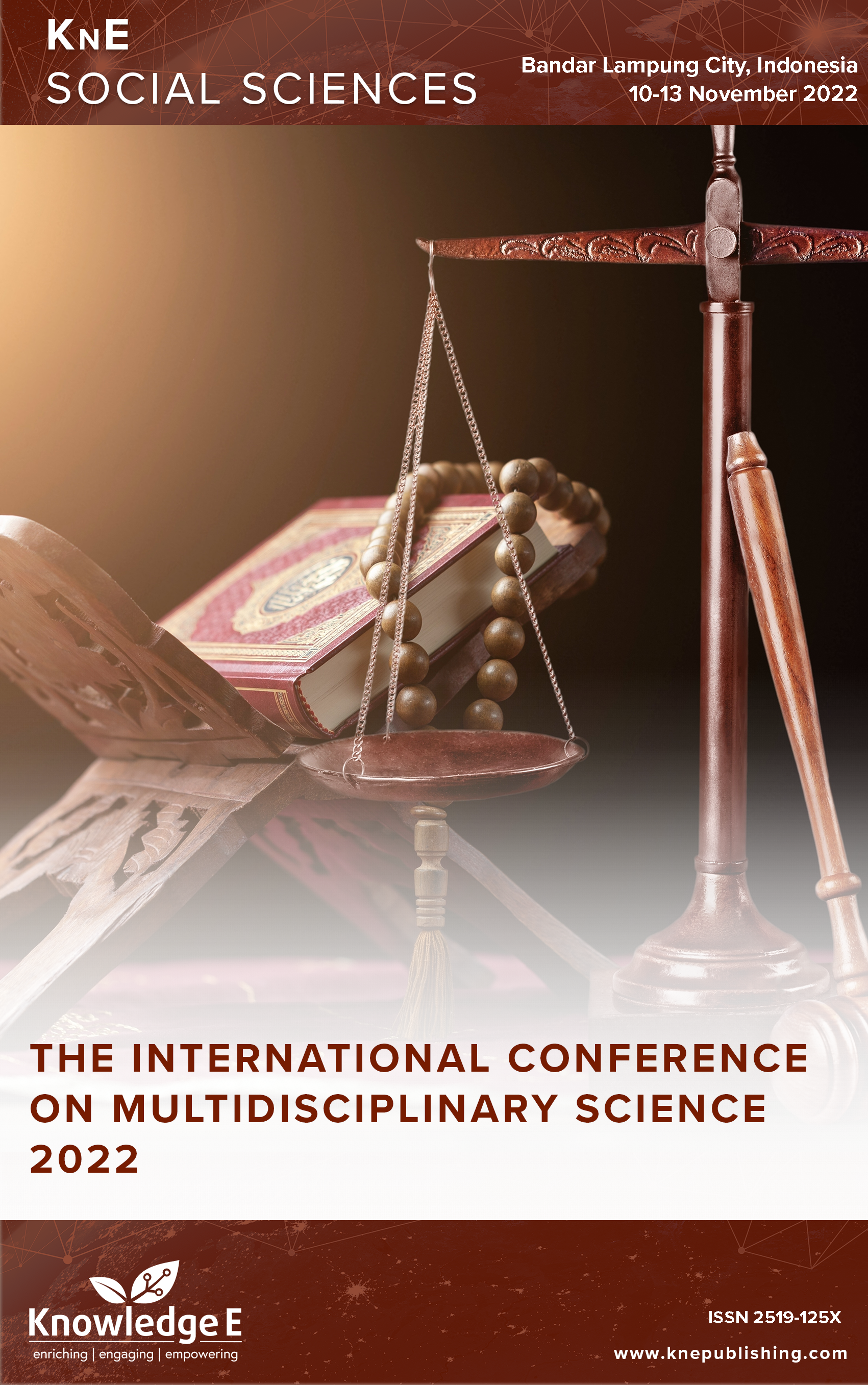Religious Leaders and Social Transformation at Ogan Ilir Regency Indonesia
DOI:
https://doi.org/10.18502/kss.v8i16.14071Abstract
Religion encompasses a process of inheriting values by its adherents from generation to generation through a learning process. The process of inheriting religious values was instilled by religious elites who not only transferred religious teachings but also transformed the nature and character of a society. One of the areas experiencing this phenomenon is Ogan Ilir Regency, South Sumatra, and its people, who are known to have tough characters and solve problems using physical violence even though the area has had traditional institutions since its ancient days, which although traditional in nature, have modern elements such as democratic traditions in politics. They also set the social order to avoid violent attitudes written in the code of laws in Simbur Cahaya. For this reason, we will discuss how the pattern of religious leaders transforms the characteristics of society, and how the model of social transformation occurs. This article describes and analyzes the above using a sociological and anthropological approach. Data collection was carried out through observation and involvement of the author in religious activities as well as in-depth interviews with ideational ethnographic methods. The data was analyzed using several relevant theories. The findings in this study are as follows: in general, when religion is seen as part of a culture, it will continue to develop and ”change”, bearing in mind that society itself continues to change dynamically. For this reason, strategies are needed so that religious values can be embedded properly and can change the character of society. One of these strategies is through the Cawisan tradition, which is a medium for non-formal education and a place for religious learning for the people of Ogan Ilir and is a public space as well as a mode of strength of the Civil Society – the agency of religious leaders in dealing with various social problems. Religious leaders instill a sense of Besemon (having a sense of shame) to take action against violations of religious teachings and rules.
Keywords: Religious Figures, Strategy, Transformation
References
[2] Ali M. Tradisi Garang Hampir Hilang. Media Sumatera Exspers.
[3] Al-Asfahani,Raghib, Mufradat al-Faz al-Qur’an. tahq. Safwan ‘Adnan Da wuri (ttp: tp,tt). 2016.
[4] Dody S. Truna: Kolaborasi dan Integrasi Kekuatan Lokal Dalam Transformasi Islam di Indonesia, Dalam Hendar Riyadi dkk,Transformasi Islam di Indonesia. Bandung: LEKKAS; 2018.
[5] Ilhamu3din J S, Pulungan N H. Sejarah kebudayaan islam di ogan hilir, 1934-2004. JUSPI(Jurnal Sejarah Peradaban Islam). 2020;3(2):104–123; https://doi.org/10.30829/juspi.v3i1.4421
[6] Kahmad D. Sosiologi agama. Bandung: Rosdakarya; 2011.
[7] Kher A. Transformasi Cawisan dari Kultur Ke Struktur Pada Masyarakat Ogan Ilir (Telah Historis Antropologis) Palembang: Disertasi, UIN Raden Fatah. 2020.
[8] Muslimin. Agama dan transformasi sosial : Studi terhadap tradisi Cawisan di Ogan Ilir Sumatera Selatan. (Bandung: Doktoral thesis, Universitas Islam Negeri Sunan Gunung Djati). 2021.
[9] Najib, Muhammad dan Tim, Sejarah Ogan Ilir, Tradisi Masyarakat dan Pemerintahan, (Indralaya), Pemerintah Kabupaten Ogan Ilir. 2006.
[10] Padila. Peranan Ulama Dalam Perkembangan Islam di Ogan Ilir, Tamaddun:Jurnal Kebudayaan Dan Sastra Islam. Jurnal.radenfatah.ac.id. 2013;13(2).
[11] Scharf.B, etty R Kajian Sosiologi Agama,M. Husein, Ed.(Yogyakarta:Tiara Wacana, Soerjono Soekanto. Sosiologi Suatu Pengantar. Jakarta: Rajawali Press. 2012.
[12] Wibisono. Yusuf Keberagamaan Masyarakat Pesisir (Studi Perilaku Keagamaan Masyarakat Pesisir di Desa Patimban Kecamatan Pusakanagara Kabupaten Subang Jawa Barat). Bandung: Disertasi, UIN Sunan Gunung Djati. 2013.

